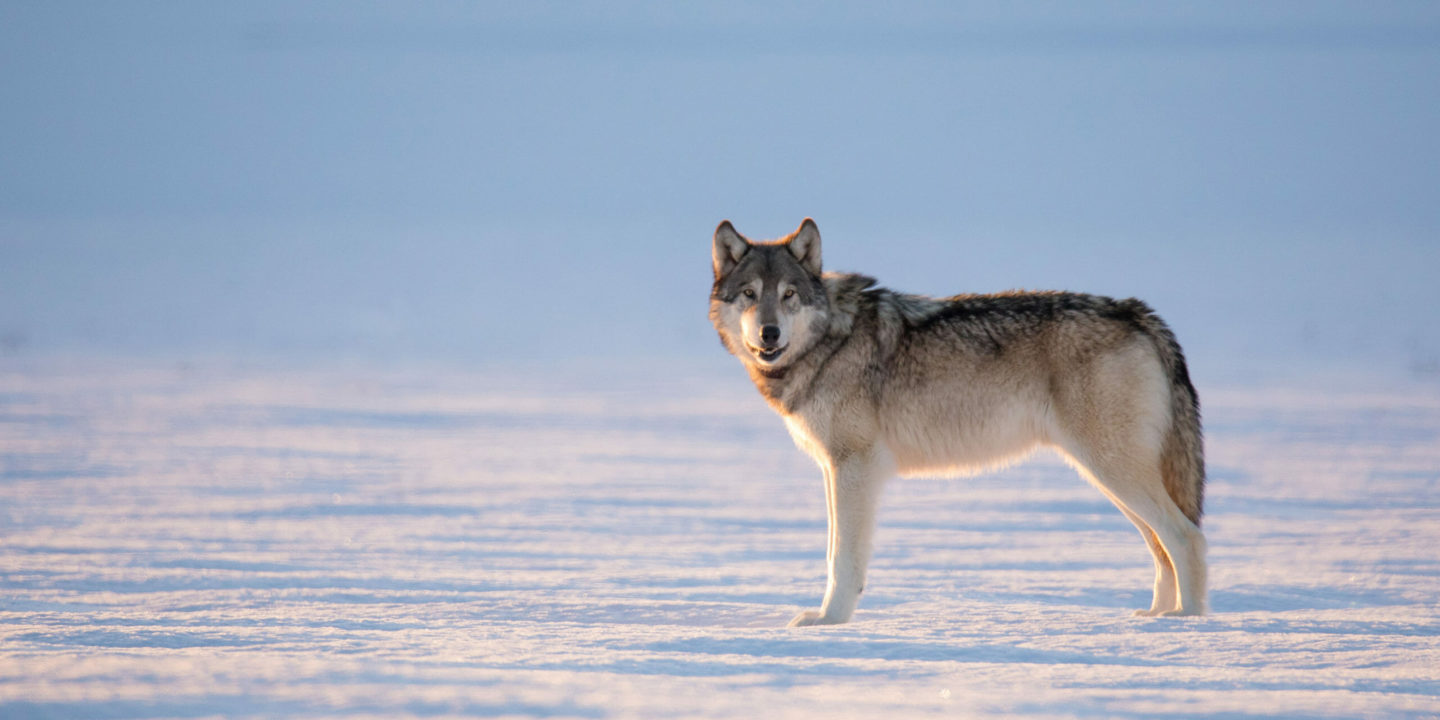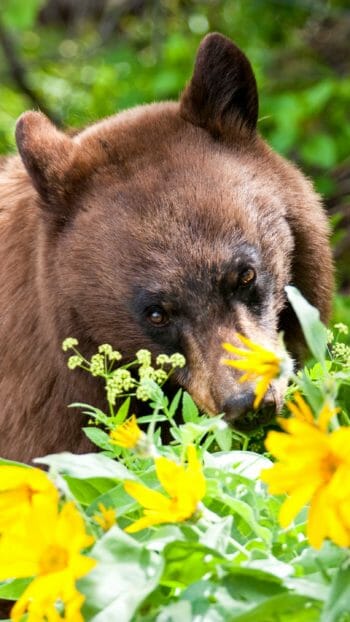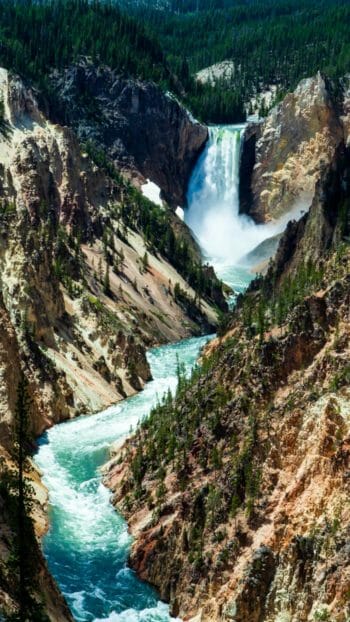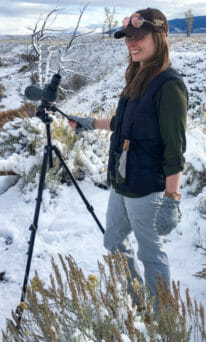Yellowstone National Park is world renowned for its rich and abundant ecosystem, boasting a diverse range of wildlife playing out the drama of predator prey dynamics long before settlers arrived. One of the most exciting and sought-after species to encounter within the park is the gray wolf, but this wasn’t always the case.
Prior to the arrival of Europeans, the population of wolves has been estimated anywhere between 250,000 and 2 million in what would later become the continental US. As settlers began to move westward and clear areas of land for farming and ranching, they found themselves at odds with the wild canines. Livestock were brought with the settlers, and elk were hunted for food. Bison had already been wiped out from the landscape through overhunting. In certain areas, the combination of reduced land and reduced prey species encouraged hungry wolves to target the livestock as a food source. A combination of hunting competition, protecting livestock, and fear lead to the drastic extermination of wolves across the continent. Wolves had bounties on them and were actively hunted down and shot on sight. By the 1920s, hundreds of thousands had dwindled to a mere 300 individuals found only in the deep woods of northern Michigan and Minnesota.
For a time, settlers relished a wolf-free environment, feeling that their livestock were safe and that the elk population was thriving, which meant abundant food for them. What was not immediately apparent was the downturn in the overall health of the ecosystem without the wolf. It is easy to look back and see why removing a key player in nature’s balance wasn’t a wise move, but this was before we developed a deeper, scientific understanding of how interconnected an ecosystem is and the important role that predators play.
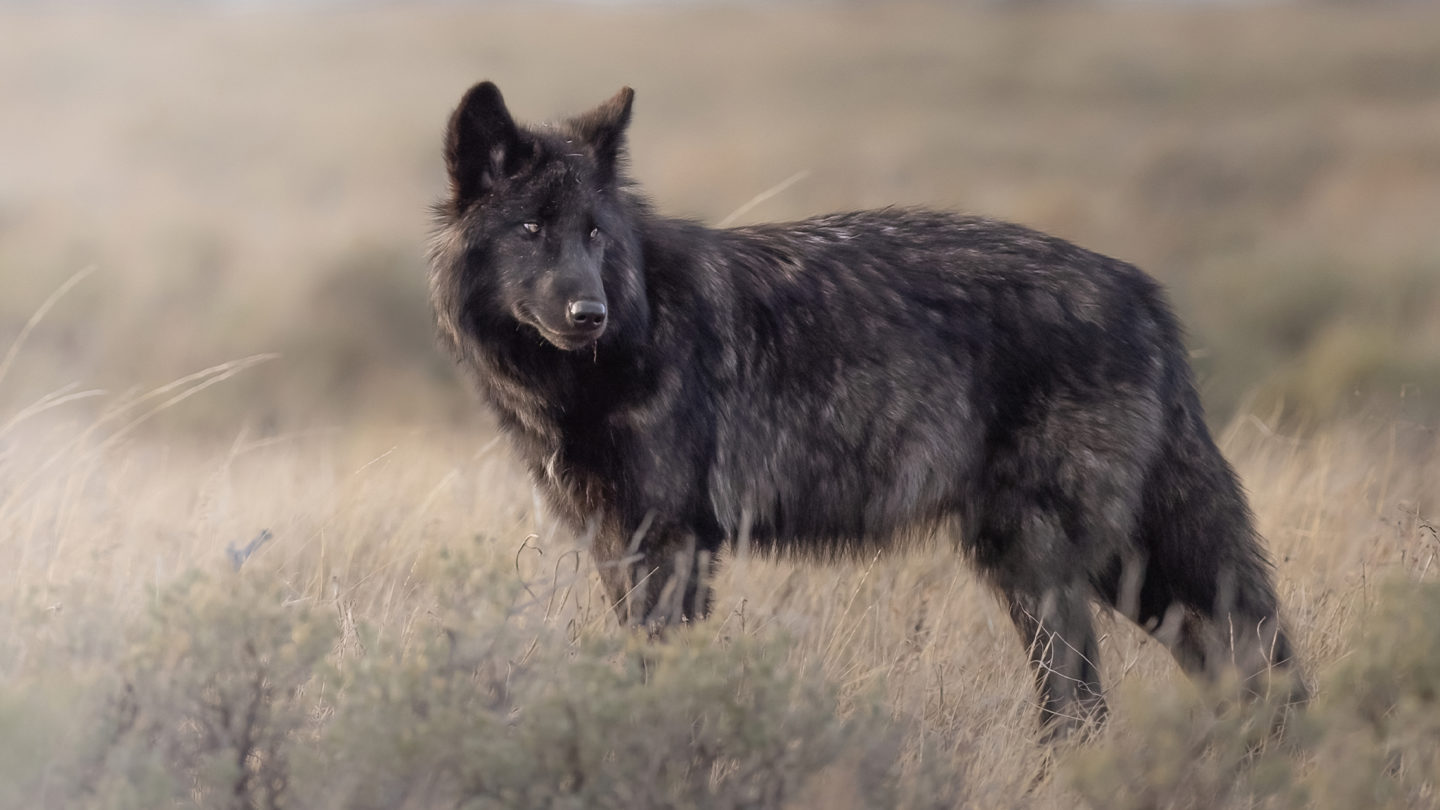
What Happened After?
The predominant prey for wolves is elk, and without their natural predator around, the elk population boomed. Additionally, just the presence of wolves will move elk around through avoidance, preventing them from lingering too long in one area and concentrating their grazing. Too many elk meant huge overgrazing on the vegetation, which directly affected other species relying on the same resources. Habitats for insects and songbirds diminished. Beavers left habitats taken over by elk as they couldn’t gather enough materials to build their dams. Without beavers, riparian habitats that thrived from their influence declined, impacting countless species of birds, mammals, and insects. Beaver dams also slow down the flow of streams which helps certain species of vegetation take hold and grow such as willow (prime moose habitat), they help keep rivers and streams clean, they reduce the severity of droughts, and they improve winter forage for ungulate species such as moose, elk, and deer.
Coyote populations also boomed in the absence of the wolf, leading to a decline in rodents from their overhunting. Many other species that rely on rodents including foxes, weasels, and birds of prey like eagles, hawks, and owls suffered from a lack of food. The loss of both the wolf and the beaver created what is known as a ‘trophic cascade’, a dramatic change in the ecosystem structure which reduced biodiversity and had a continuous domino effect.
These changes may have let the elk population soar, which seemed like good news to settlers who wanted an abundant food source, but it compromised the health of the herds. Wolves hunt the weak and the sick, acting as a method of disease control. Genetically, elk herds are stronger with the wolf’s presence. With diseases like Chronic Wasting Disease lurking around ungulate populations, predators who target infected individuals are extremely important.
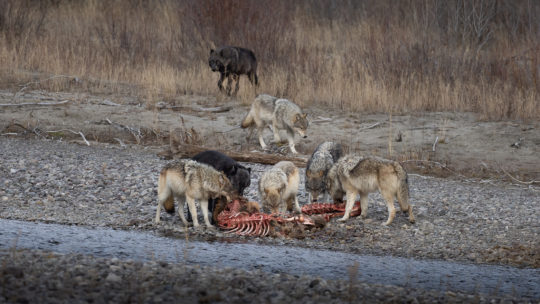
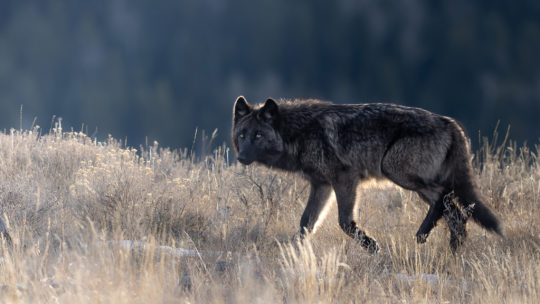
Reintroducing Wolves to Yellowstone
Over time, biologists recognized the challenges that the Greater Yellowstone Ecosystem was facing in the absence of wolves. In 1967, the wolf was listed as “endangered” in the contiguous United States under the Endangered Species Preservation Act, however this only provided limited protections. Later, in 1978 the gray wolf was awarded federal protections through the Endangered Species Act of 1973. This was an updated legislation adding nuance to conservation and management, obligating the U.S. Fish and Wildlife Service to develop restoration plans for each species listed as endangered. After years of planning and discussion, the decision was made to bring the apex predator back to the landscape through a cooperative effort between the National Park Service, Fish and Wildlife Service, academia, state wildlife agencies, and environmental groups. In 1995 and 1996, 70 years after their eradication, 41 wolves were brought to Yellowstone National Park: 31 from Canada and 10 from northwest Montana.
Over the next few years, elk populations declined as expected and the herds were pushed around as they were before. Vegetation finally had a chance to rebound, and other species began to recover. Beavers returned to the area and began building dams again. Coyote populations decreased allowing rodents to repopulate, subsequently allowing birds of prey and smaller predators to recover. The recovery was a true marvel and a testimony to the importance of top predators in the overall health of an ecosystem, and to how much our interference can have major impacts, often with unintended consequences.
The wolf reintroduction is widely regarded as one of the most successful rewilding conservation feats ever achieved.
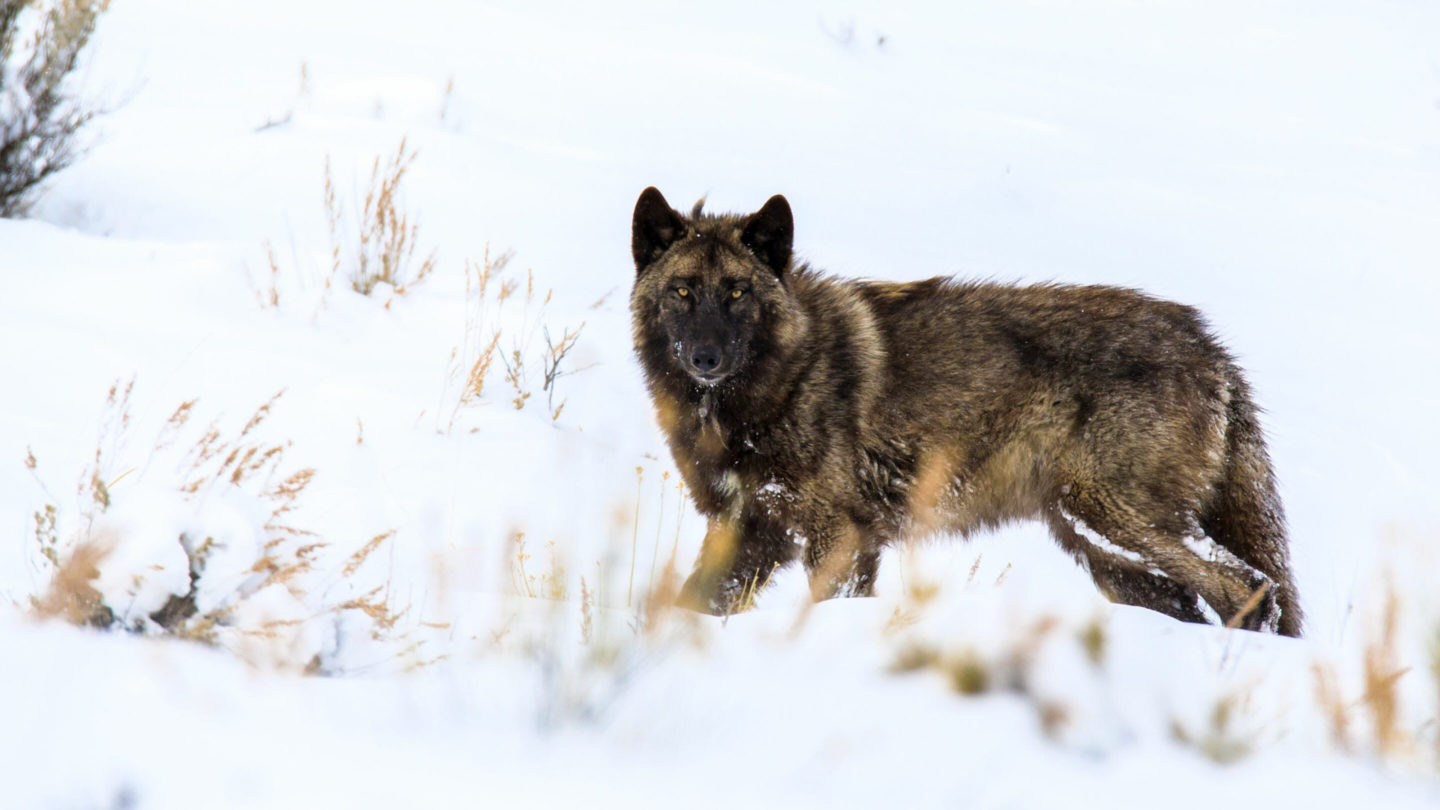
Criticisms and Misinformation
Wolves are arguably the most politically controversial wild species; the stigma of the “Big Bad Wolf” had many groups opposed to the reintroduction. Local ranchers and farmers who had now operated for 70 years without having to worry about wolves did not want their return. They feared for the safety of their livestock, and the misconception of the wolf being a danger to humans has persisted in local communities. As a compromise for introducing a potential “pest”, the government agreed to compensate for any livestock that are killed by wolves. While this conflict does occur, the prevalence is extremely exaggerated. The Montana Department of Livestock reported seven cattle depredations between 2013-2021 in Park County- less than one per year. Yellowstone wolves do not pose a significant threat to neighboring livestock, and the benefits they bring to the ecosystem are invaluable.
Critics claim that the species of wolf reintroduced to Yellowstone are different from the native species that used to inhabit the area, labeling them an ‘invasive species’, arguing differences between timber wolves and gray wolves. This is untrue; both the original wolves of Yellowstone and the relocated wolves are Canis lupus, and can be referred to by both common names. Considering the impressive distances wolves can travel (a dispersing wolf can travel as far as 600 miles in search of a new pack), the areas that they were selected from are not beyond the range of a natural dispersal and range expansion. In fact, wolves would commonly disperse south from Canada, but would ultimately be killed by people.
Wolves are not only native to Yellowstone, but their presence is crucial to the stability of the ecosystem and their influences are irreplaceable.
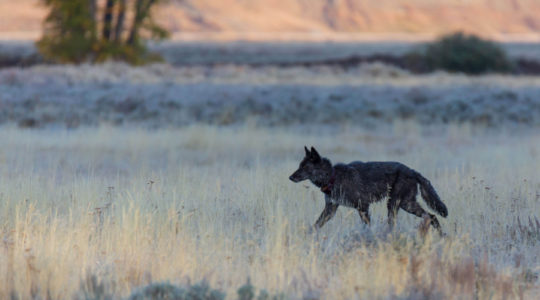
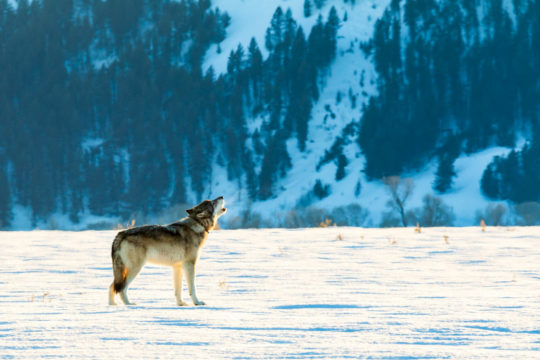
The Challenging Life of a Yellowstone Wolf
The life of a gray wolf is a constant series of trials and tribulations. Wolves are by nature extremely territorial and frequently kill members of other packs. When they’re not fighting each other, they are hunting dangerous prey often ten times their size. An elk can kill a wolf with one kick, and bison ferociously defend other herd members. Wolves are only successful in 20% of their hunts, so they must take many chances and work together to survive. The average lifespan of a wolf in Yellowstone is only four to five years, a result of the perilous life they lead.
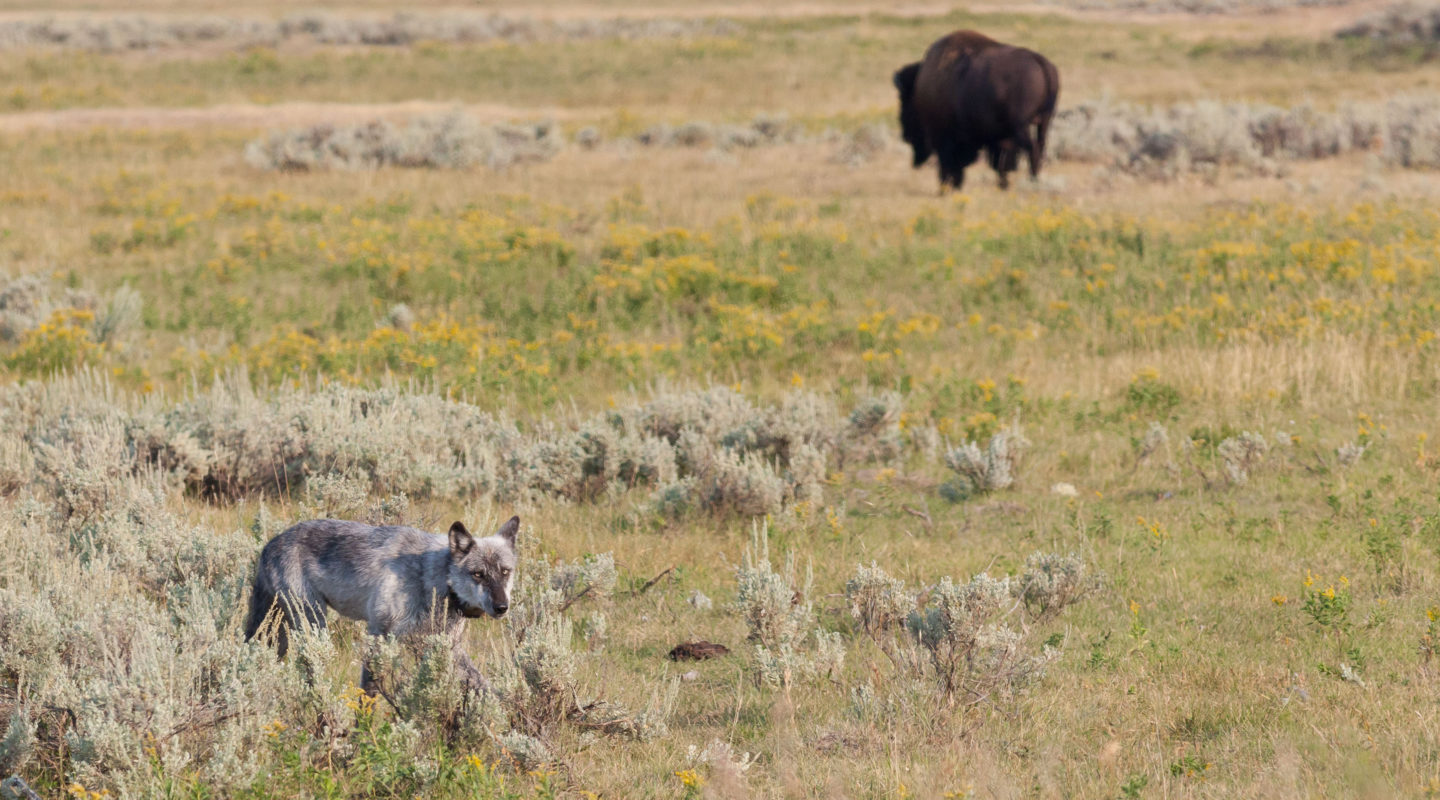
The Success of Reintroduction
The Greater Yellowstone Ecosystem was in a natural state of balance before European settlers arrived. Native tribal people coexisted with the wolf and respected them as creatures of the earth with as much right to inhabit the lands as they did. Some tribes believed that God roamed the earth in wolf form. Many admired the wolf as medicine beings with courage, loyalty, and strength. When settlers arrived, they were viewed as adversaries, something to be defeated and dominated. When you look at modern western culture and how wolves are portrayed in stories and media, they are typically the villain. The elimination of the wolf from the landscape was a result of fear, misunderstanding, and a disconnect from the natural world. It was an artificial change to the ecosystem with disastrous consequences.
Restoring, or ‘rewilding’ the gray wolf in Yellowstone was a step in the right direction of righting our wrongs and acknowledging their irreplaceable benefits in the ecosystem. Thanks to bold and ambitious conservation efforts, there are now an estimated 6,000 wolves in the lower 48. This is a mere fraction of their historic numbers, and in recent years they have been stripped of their federal protections, leaving them vulnerable to a repeat of previous persecution. The future of wolves depends on our commitment to acting as stewards of our invaluable wilderness, ensuring that they always have a place where they belong.
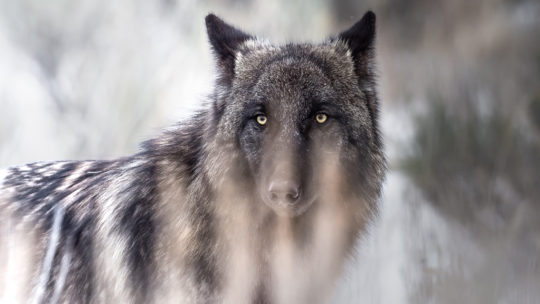
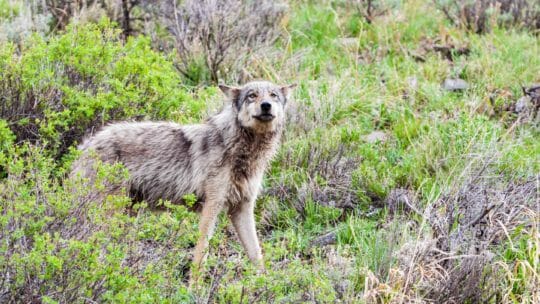
Experience Wolves in the Wild
Join us in Yellowstone National Park’s wilderness to experience the magic of wild wolves for yourself in their natural habitat on our 3 Day Winter Wolves Tour! We will explore the northern range which offers world class wolf watching. While it is incredible to spot a wild wolf any time of the year, winter is particularly magical. Our expert guides will lead you on an unforgettable journey armed with the knowledge of wolf habits, recent activities, and high-powered optics for the best viewing experience.
Yellowstone offers us a chance to get personal with our own wilderness and experience being in the presence of awe-inspiring wildlife that most people only see in movies and documentaries. By watching these animals in their most natural state first hand, we develop a personal and emotional connection. In the words of environmentalist Baba Dioum, “In the end we will conserve only what we love, we will love only what we understand, and we will understand only what we are taught.”
Yellowstone visitors witness the profound importance of our wild spaces, leaving with a sense of deep appreciation for what they’ve seen and how it made them feel. This is where the root of conservation begins, and we are thrilled that we can be a part of that.

